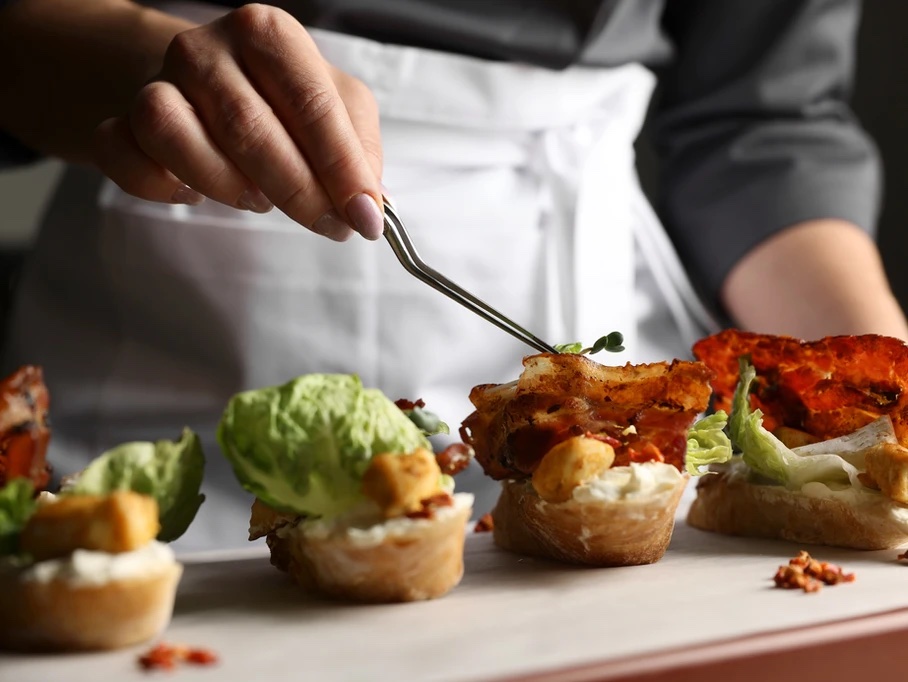Running a successful restaurant requires monitoring a variety of key performance indicators (KPIs) to ensure that the business is operating efficiently and profitably.
Here are 6 of the most important KPIs that restaurants should keep an eye on:
1. Food cost percentage:
This KPI measures the percentage of food sales that goes towards the cost of ingredients. The average food cost can vary depending on a number of factors such as the type of food being served, the location. There are different benchmarks for catering, quick service and fine dining restaurants. A high food cost percentage can indicate that a restaurant is overspending on ingredients or that menu prices are too low. Ideally, restaurants should aim for a food cost percentage of around 28-35%. Food cost is a static number which means it doesn’t depend on sales volumes. If the menu items are priced correctly, the food cost should be the same percentage whether the restaurant had $120K in sales or $200K next month. Fixing high food costs may be challenging and complex, but with patience and practice, you will achieve successful results. Make sure your menu is costed out correctly. Did you consider produce/meats yields? How effective are your cooks in cutting meat/fish? Do you have the same employee doing it? Have you looked into waste? Do you keep a waste log? When was the last time you negotiated with vendors or shopped around? Implement an ABC system of ingredient sourcing organized in descending dollar order. Start with most expensive items, focus on top 20% of your ingredients – they are usually responsible for 80% of your purchase volume. Shop around systemically and periodically to ensure the best price.
2. Labor cost percentage:
This KPI measures the percentage of total sales that goes towards employee wages and benefits. A high labor cost percentage can indicate that a restaurant is overstaffed or that wages are too high. Ideally, restaurants should aim for a labor cost percentage of around 27-33%. Labor cost is the cost of the wages and benefits paid to employees. It can be broken down into two main components: variable and fixed. In simpler terms, variable labor cost is the cost that changes depending on how much you are producing, while fixed labor cost is the cost that remains constant regardless of how much you are producing. For example, the fixed component is having to keep a certain number of employees on location regardless of sales volumes or how busy the location is.
3. Sales per square foot:
This KPI measures the amount of sales that a restaurant generates per square foot of space. A high sales per square foot can indicate that a restaurant is using its space efficiently and that it’s generating a good return on investment. As a benchmark, a good sales per square foot for a quick service restaurant is around $500- $700 per square foot, this can vary depending on the location, the concept and the menu offerings. For example, a quick-service restaurant in a high-traffic tourist area might have higher sales per square foot than one in a more residential area. Sales per square foot typically includes the entire restaurant space, including the kitchen area. This is because the kitchen is an integral part of the restaurant operation and the cost of operating the kitchen must be factored into the overall financial performance of the restaurant.
4. Guest satisfaction:
This KPI measures how satisfied customers are with their dining experience. Restaurants can use guest satisfaction surveys or online reviews to track this KPI. High guest satisfaction rates can lead to repeat business and positive word-of-mouth advertising. Don’t underestimate the power of a good review.
5. Rent as percentage of Sales
Rent as a percentage of sales is not typically considered a key performance indicator (KPI) for a restaurant, although it is an important financial metric that should be considered. The industry average rent for a restaurant can vary greatly depending on a number of factors, such as location, size of the space, and whether it’s a stand-alone building or in a shopping center. However, in general, the industry average rent for a restaurant can range from 6-15%. However, it is not advisable for rent to exceed 10%. This rent will include the base rent, as well as any common area maintenance (CAM) fees or triple net (NNN) fees.
CAM fees are additional charges that cover the cost of maintaining common areas, such as parking lots, elevators, and lobbies. These fees are typically passed on to tenants in addition to base rent.
NNN fees are additional charges that cover the cost of property taxes, insurance, and maintenance. These fees are also typically passed on to tenants in addition to base rent.
6. Inventory turnover:
This KPI measures how quickly a restaurant is able to sell its inventory. A high inventory turnover can indicate that a restaurant is ordering the right amount of ingredients and that its menu items are popular. A low inventory turnover can indicate that a restaurant is ordering too much or that its menu items are not selling well. A good inventory turnover rate for a restaurant can vary depending on the specific restaurant, but in general, a turnover rate of 8-12 times per month is considered good. This means that a restaurant is selling and replenishing its inventory 8 to 12 times per month. A higher turnover rate indicates that a restaurant is efficiently selling its inventory and that its menu items are popular. A lower turnover rate can indicate that a restaurant is ordering too much inventory or that its menu items are not selling well. It’s worth noting that, restaurants that operate in different segments of the market, may have different inventory turnover rates. For example, a quick service restaurant may have a higher inventory turnover rate than a fine dining restaurant because the food is less perishable.




